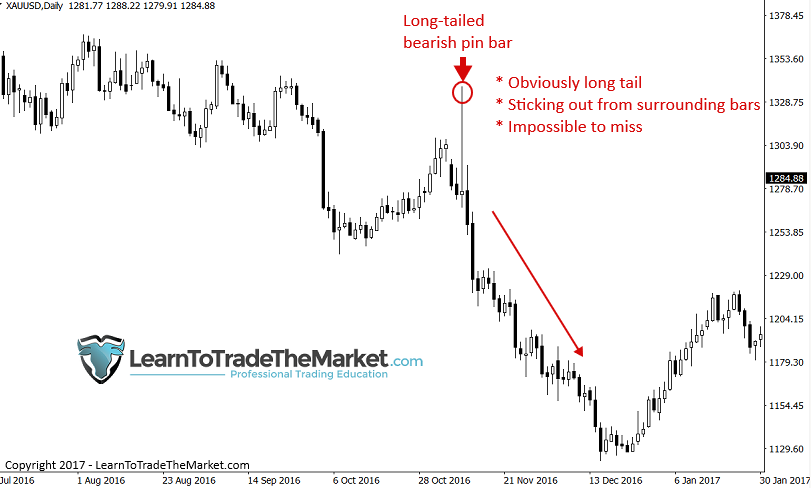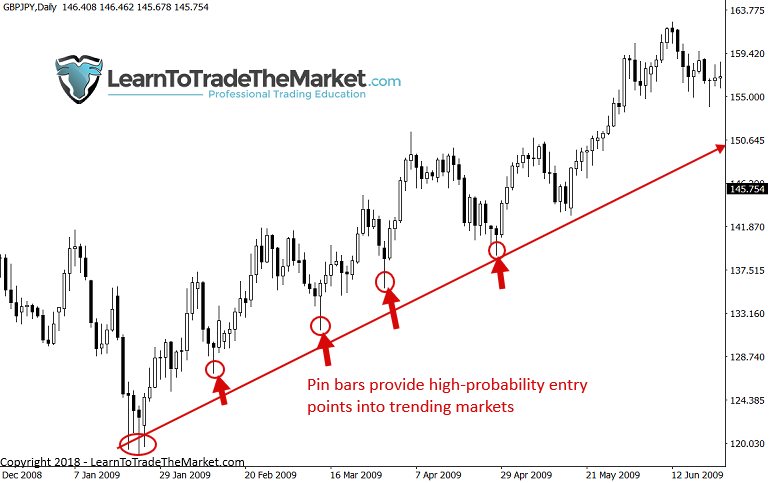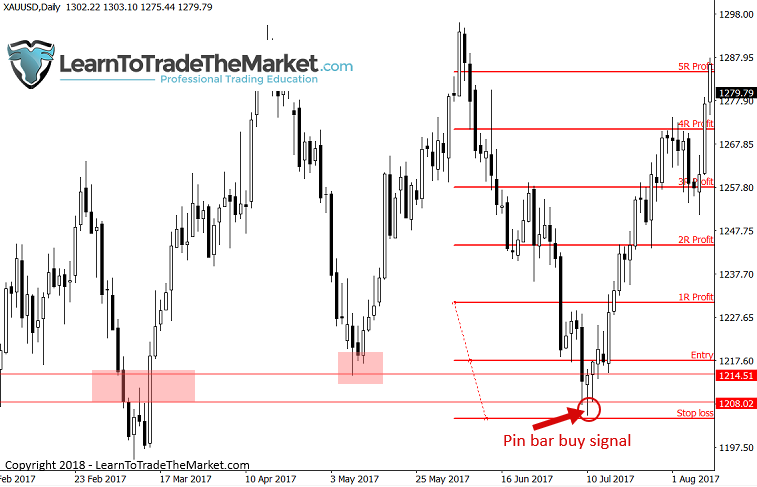3 Trading Strategies I Would Take to A Desert Island » Learn To Trade The Market
 Everyone likes to have fun with hypothetical “Desert Island” questions. You know the ones where you’re sitting around with your friends asking each other what you would take with you or perhaps who you would take with you if you only had ONE choice and had to be banished to an uninhabited / desert island for the rest of your life?
Everyone likes to have fun with hypothetical “Desert Island” questions. You know the ones where you’re sitting around with your friends asking each other what you would take with you or perhaps who you would take with you if you only had ONE choice and had to be banished to an uninhabited / desert island for the rest of your life?
In today’s lesson, I wanted to have a bit of fun but also discuss with you what I would take with me if I could only pick ONE trading approach for the rest of my life. If I was going to a desert island (that had excellent internet connection lol) these are the trading tools that I would take with me…
Here’s how I would enter the market…
If I had to only look for ONE price action pattern to enter the market from, it would be a very obvious and powerful one, something that once you understand, is hard to miss…
What I would be looking for is a pin bar or tailed bar, ideally a long-tailed pin bar. These are patterns with an obviously long tail (or shadow), it doesn’t have to be a “pin bar” per say, although it’s better if it is, but a simple tailed bar located properly will work too.
Let’s look at some examples of what I am looking for on a day-to-day basis in the market regarding tailed bars and pin bar reversals:
Here’s an example of a long-tailed pin bar (sell signal) within a down-trending market:

Here’s another example of a long-tailed pin bar. This time, it’s a bullish long-tailed pin bar (buy signal) that formed at a key support level in the market:

As we can see in the next example, pin bars often give us very easy to spot entries into powerful trends. In fact, a pin bar after a pull back within a trend is probably my favourite price action entry setup:

Next, let’s check out a tailed bar; a bar that is not quite a “pin bar” but still essentially portrays and implies the same thing. The main difference is the body (distance between open and close) of the bar is not quite as small as a pin bar’s in relation to the total length of the bar:

From the examples above, it should be apparent what I would be looking for if I could ONLY pick ONE entry signal to use for the rest of my life. It should also be apparent WHY I would choose pins / tailed bars; they convey a very important message about what is likely to happen next in the market, in a very clear and powerful way.
For a more detailed tutorial on tailed bars, see my tailed bar trading tutorial
For a more detailed tutorial on pin bars, see my pin bar trading tutorial
Money management
It’s always amusing to me that most beginning traders seem almost entirely concerned with their trade entries when in fact the more important part of trading is money management. Money is made or lost depending upon how well you manage your trades and your money, not so much on how well you enter the market (although entries do play an important role).
No trade entry strategy or trading method would be complete without a money management plan. The most important aspects of money management for a trader, are position sizing and risk reward. These are the money management components I would be worried about for my “desert island” approach.
When I talk about position sizing, I am referring to the number of lots (in Forex) or the trade volume / number of contracts / shares (stocks) etc. We are talking about the SIZE of the position you are trading. Why is this so important? Well, because it determines how much money you have at risk; the larger position, the more money you are risking. The other reason it’s so important is because properly adjusting your position size to maintain your overall 1R risk per trade, is vital to long-term trading success.

To read more about position sizing, check out my lesson on position sizing.
Risk reward is the other critical money management component. This refers to finding a trade’s risk vs. its potential reward, which you typically want at 1 to 2 or more (Reward at 2 times risk). It’s important to consider the potential risk / reward of any trade before you enter it, because whether a good risk / reward is attainable may impact your decision to take the trade or not.
Notice in the example below, the risk is 1R, where R = the dollar amount you have at risk on the trade. In this case, the risk is the distance from the entry (pin bar low) to the stop loss (near pin high) and the reward is set at 2R or 2 times risk. It’s important to try and get reward of at least double your risk so that you take advantage of winners when they come along and so they are big enough to offset your losers and still give you a profit.

In the example below, we can see what it looks like to plot out the potential risk reward of a pin bar trade. Notice I have customized the MetaTrader 4 Fibonacci tool to show risk vs. reward of any trade setup. I have detailed how to do this in an article on the risk reward tool, so check that out to learn more. Notice, this pin bar signal set off a potential 5R winner…

Daily time frames and low-frequency
A trading strategy wouldn’t be complete without something to hold it altogether, the X-factor, so to speak. For me, that is trading daily chart time frames in a low frequency trading approach.
This type of trading essentially means that we are focused on the daily charts and we are not looking to trade often, instead, we are looking for high-quality setups (which tend to be somewhat rare). What this does is increases our potential win-rate per trade and thus gives us a better chance of making money over the long-run. It also allows us to more easily keep our emotions in check and largely eliminates the potential to over-trade, which is typically the number one thing that kills traders’ accounts.
In the example below, notice the pin bar entry signals that formed at a key support level, what I want you to really notice is that this was the daily chart (as are all the other charts in this lesson and most of my lessons). If I was stranded on a desert island, I could enter this trade long and let it set for 1-2 weeks and spend that time…trying to build shelter and gather food…and come back to a huge profit. Perhaps a bit too hypothetical of an example (what would you do with money stranded on an island? Pay pirates to save you maybe?!), but the point is still valid – End-of-Day trading allows you to reduce your time commitment and helps to subdue / tame your emotional responses to the market so that you have a better chance at long-term trading success, it is a win-win!

If I was stranded on a desert island and could only use one trading approach, it would be:
- Pin bars / tailed bars
- Money management
- Daily charts / end-of-day approach
It really is as simple as the three-point plan I outlined above, so stop over-complicating it.
To learn more about daily chart trading and end-of-day trading, check out these tutorials:
How to trade ‘end of day’ trading strategies
Daily chart time frame trading tutorial
Conclusion
While today’s lesson dealt in a hypothetical situation of being forced to pick one trading strategy to take to a desert island for the rest of your life, the wisdom and strategies discussed are not hypothetical at all.
The strategies I discussed above are how I trade 90% of the time in my day-to-day trading. The concepts are transferable across all types of markets, from Forex to futures, stocks and anywhere in between. They are most applicable to the 1-hour time frame and above, but as discussed, I greatly prefer the daily chart time frame to all others. So, no matter where you end up, on an island or a trading desk, remember that the concepts discussed here and that are expanded upon in my advanced price action trading course, have stood the test of time and will serve you well in not just surviving… but in thriving in all trading environments.
What did you think of this lesson? Please share your feedback in the comments below!





Comments are closed.